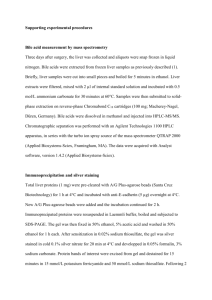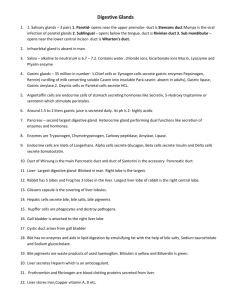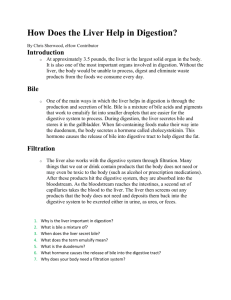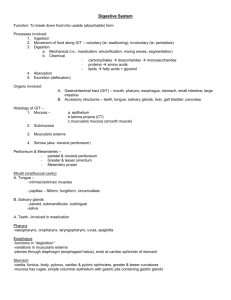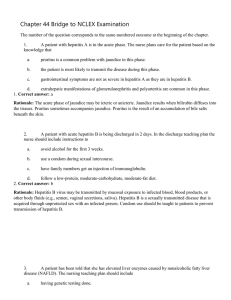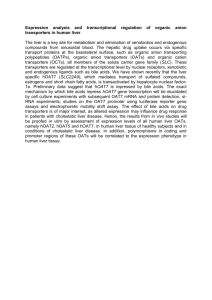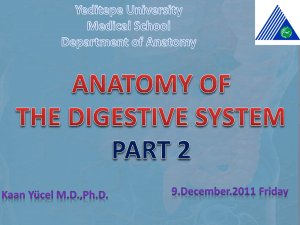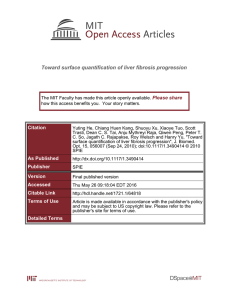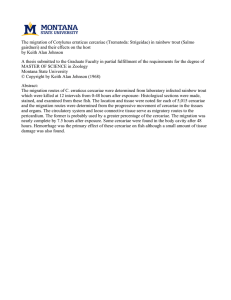Chapter 18 - Digeneans: Plagiorchiformes and Opisthorchiformes
advertisement
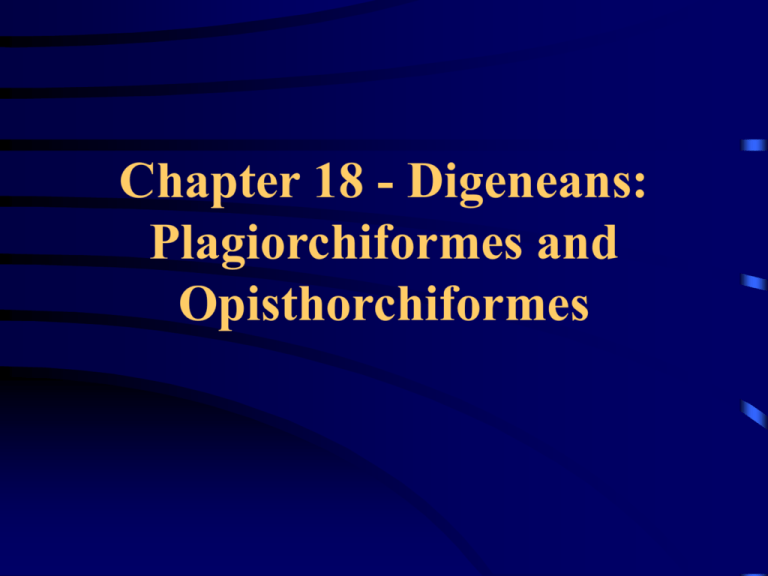
Chapter 18 - Digeneans: Plagiorchiformes and Opisthorchiformes Order Plagiorchiformes • Adults of this order show little similarity to one another; however, larval stages exhibit many similarities Family Dicrocoeliidae • A fluke that can parasitize humans, but is more common among a variety of domestic mammals • Parasitize the gall bladder, pancreas, intestine, and liver and its associated ducts • All are parasites of terrestrial or semi-terrestrial vertebrates and use land snails as first intermediate hosts Dicrocoelium dendriticum Dicrocoelium dendriticum Life cycle • Eggs are passed with the feces of the host sheep • Eggs containing miracidia are consumed by snails; mother sporocysts give rise to daughter sporocysts which in turn give rise to cercariae • Cercariae accumulate in the mantle cavity of the snail and act as an irritant • They become encased in mucous and are deposited from the snail as a slime ball Life cycle cont. • Slime balls are eaten by ants with most of the resulting metecercariae encysting in the hemocoel of the ant • A few metecercariae encyst in the subesophogeal ganglia of the host ant • Behavior of the ant becomes altered (cling to blades of grass in the evening) and ants are readily consumed by sheep • Metacercaria excyst in the intestine of the sheep host and migrate to the bile duct and liver Family Haematoloechidae • Parasites in the lungs of frogs and toads Life Cycle of Haematoloecus medioplexus • Eggs are deposited in the lungs where they hatch • Miracidia move from the respiratory system to the intestine and are carried out with the feces • In water, they are consumed by snails and transform to sporocysts, which eventually give rise to cercariae • Cercariae are sucked up by the rectal branchial chamber of dragonfly nymphs and here they encyst as metacercariae • When adult dragonflies are eaten by frogs, the metacercariae excyst in their digestive tract and migrate to the lungs to become adults Family Prosthogonidae • Most are parasites in the oviduct, bursa of Fabricius, or the gut of birds • Prosthogonimus macrorchis often parasitizes the oviducts of domestic waterfowl and can cause considerable damage to organs, even preventing egg laying in some cases Prosthogonimus macrorchis Order Opisthorchiformes Clonorchis sinensis • Clonorchis sinensis is known as the oriental or Chinese liver fluke because it is distributed throughout Japan, Korea, China, Taiwan, and Vietnam • It is estimated that this species infects more than 30,000,000 humans in these areas. • The parasite also infects a number of other animals, including dogs, cats, pigs, and rodents, and these animals serve as reservoirs of infection. Life Cycle Pathology • The parasite causes thickening of the lining of the bile duct and an inflammatory response in the surrounding liver tissue. • In heavy infections the bile duct epithelium can also be eroded, and the parasite's eggs will enter the liver tissue; in such cases the eggs are surrounded by a fibrotic capsule (granuloma). • Heavy infections can also result in stenosis (narrowing or blockage) of the bile ducts. • Since the parasites can live for years and the number of parasites tends to increase as a person ages, the damage to the liver and bile duct tends to accumulate over time and can result in death.



